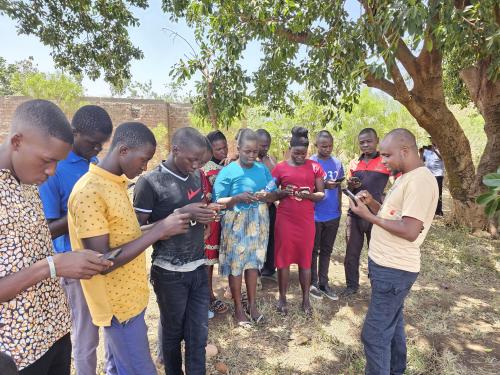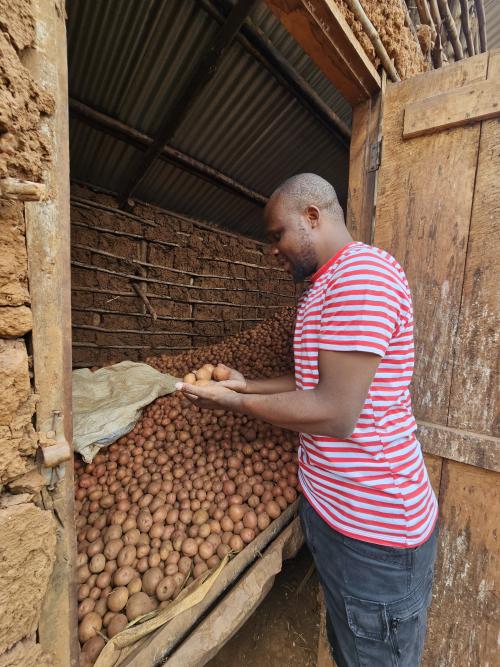Artificial intelligence is often hailed as the future of farming. But without real agronomy - the science of crops, soils and farming systems - AI is just numbers. At iSDA, agronomists like Dr. Paul Chunga are making sure that Virtual Agronomist doesn’t just crunch data, but delivers advice that actually works for farmers in Africa.
A Malawian agronomist with nearly a decade in CGIAR institutions, a PhD in agronomy and applied plant physiology, and now Senior Agronomist at iSDA, Dr. Chunga has dedicated his career to bridging science and practice. We spoke to him about his journey, and why agronomists are essential to shaping AI in agriculture.
You’ve worked across CGIAR, ICRISAT, IITA, and now iSDA. What first drew you to agronomy, and how has your journey shaped the way you think about farming systems?
My decision to venture into agronomy started in 2001, when Malawi faced an acute food shortage that led to the loss of thousands of lives. It was painful to see this happen in a country with vast land, water and energetic citizens who could produce enough food for both domestic use and export. I realised the missing links were a lack of technical expertise among smallholder farmers, non-functional farming systems and outdated technologies.
That experience pushed me to study agriculture so I could be part of the solution. Years of working with smallholder farmers across sub-Saharan Africa have confirmed that the gap between potential and actual yields is huge. My belief is that Africa must adopt data-driven farming systems - that’s the only gateway to sustainable food production and food security.
You’ve worked on crops as different as sugar beet in the UK and soybeans in Malawi. What did you learn about the common threads of good agronomy across these contexts?
Good agronomy is the foundation of better yields, regardless of the crop. The underlying physiology is similar, but performance depends on how we manage the crop and its environment. It comes down to the basics: seed, soil, nutrition and the timely execution of practices like planting, weeding, fertilizer application, and pest and disease control.

What do smallholder systems in semi-arid Africa teach us about resilience and innovation?
Semi-arid regions are tough environments — poor soils, pests and diseases, limited market access and prolonged droughts. Yet innovations in agriculture have helped smallholders build resilience. This shows that with the right investments in agricultural innovation, Africa can become self-sufficient and hunger-free.
You believe that data-driven agronomy is the foundation for effective AI. What does “good data” mean in practice?
Good data is scientifically sound data that improves production. It helps design cropping systems that raise yields and strengthen resilience. Using AI tools like Virtual Agronomist to put that data in farmers’ hands is a game changer. It connects smallholder farmers to science in ways that were never possible before.
How do you see the role of agronomists changing as AI tools like Virtual Agronomist scale to reach hundreds of thousands of farmers?
Agronomists will play an even stronger role. AI allows proven technologies to reach farmers who might otherwise default to traditional methods. But agronomists are the ones who must feed AI with the right information — on soils, nutrients, crops, pests and diseases — so that the advice remains scientifically grounded.
What are some things AI can’t “know” without agronomists feeding in real-world context?
AI must be guided. It cannot “know” nutrient requirements, soil properties, or pest and disease dynamics without being informed by agronomists. And importantly, AI must learn African languages. Farmers understand agronomic principles much better in their own language. If I could teach AI one thing about African farming systems, it would be that.

What’s the danger of AI without agronomy?
AI without agronomy is empty. Worse, it can misinform farmers if the data isn’t grounded in science. Agronomy should be the first industry to embrace AI — it’s how we reach millions of farmers who lack technical expertise.
Looking ahead, what excites you most about combining agronomy with AI?
As an agronomist, my vision is to see science-based advice reach every farmer. AI makes that possible. For example, iSDA has delivered over 6,000 farm-specific fertiliser recommendations and 500 pest and disease diagnoses in a single day through Virtual Agronomist. That’s something conventional extension could never achieve.
In 10 years, if we get this right, most farmers will have access to improved agricultural technologies. That will boost productivity, improve incomes, and secure food sufficiency across Africa.
After nearly a decade in the field and research, what keeps you motivated?
Agronomy integrates biology, chemistry, soil science, ecology, genetics and economics — all with the goal of feeding communities. That integration is both challenging and motivating. What keeps me going is seeing people’s livelihoods change for the better. That’s the real reward.



